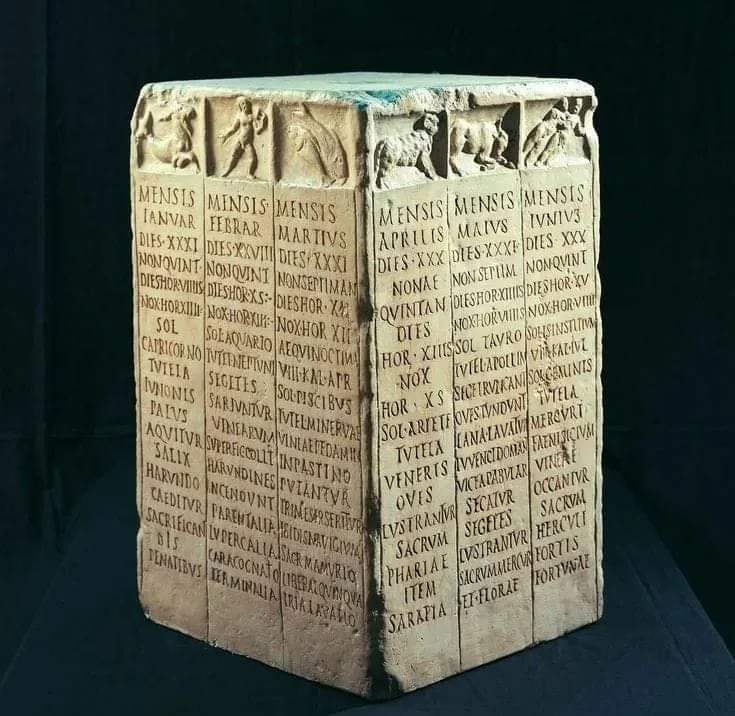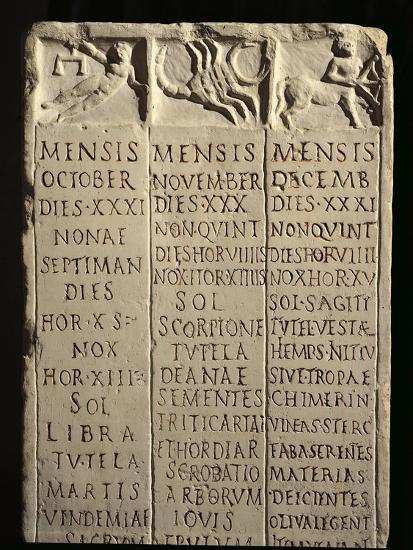Dropping a quick post because I recently discovered a depiction of the zodiac on a calendar monument discovered in Pompeii. Pictures are hard to find, so I'm cobbling together from a few places I found them on the internet.



The book, Pompeii: Its History, Building, and Antiques has a passage describing the monument:
A curious literary monument has been found in the shape of a calendar. It is cut on a square block of marble, upon each side of which three months are registered in perpendicular columns, each headed by the proper sign of the zodiac. The information given may be classed under three heads, astronomical, agricultural, and religious. The first begins with the name of the month[ then follows the number of days; then the nones, which in eight months of the year fall on the fifth day, and thence called quintanae - in the others on the seventh, and were therefore called septimanae. The ides are not mentioned, because seven days always elapsed between them and the nones. The number of hours in the day and night is also given, the integral part being given by the usual numerals, the fractional by an S for semissis, the half by small horizontal lines for the quarters. Lastly, the sign of the zodiac in which the sun is to be found is named, and the days of the equinoxes and of the summer solstice are determined: for the winter solstice we read, Hiemis initium, the beginning of winter. Next the calendar proceeds to the agricultural portion, in which the farmer is reminded of the principal operations which are to be done within the month. It concludes with the religious part, in which, besides indicating the god under who guardianship the month is placed, it notes the religious festivals which fell within it, and warns the cultivator against neglecting the worship of those deities, upon whose favour and protection the success of his labours was supposed mainly to depend.